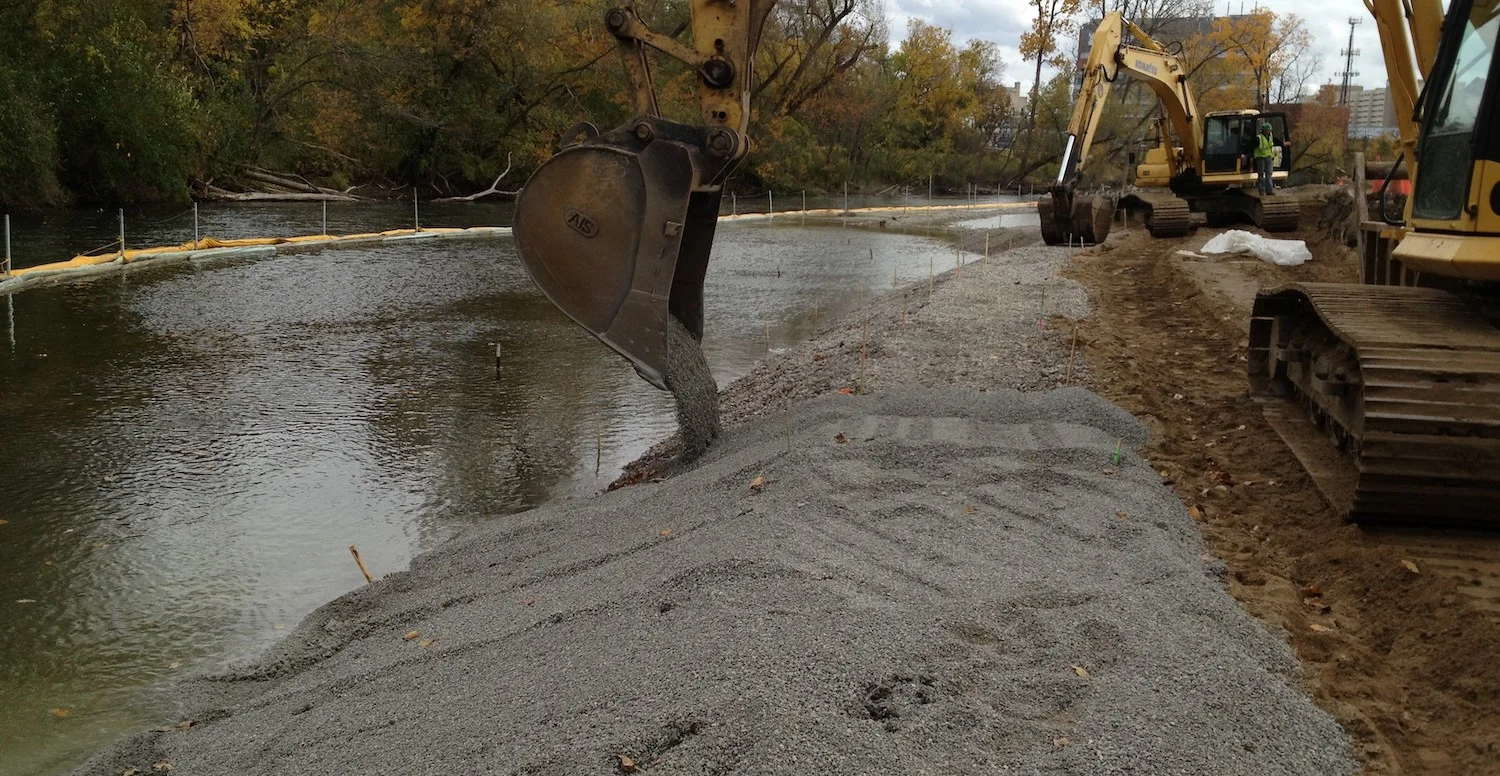Key Advantages
Minimize risk of localized breakthrough through the more uniform treatment layer
Relatively long residance/contact time between contaminant and adsorptive or reactive material
Lower quantity of adsorptive material required meaning lower cost
Can be used on a slope or bank to address groundwater to surface water discharge
The Problem
A primary challenge in the use of amendment or treatment materials for an active (reactive) cap is addressing the issue of non-uniform movement or upwelling of contamination through the sediments and, therefore, the cap. This creates a situation where isolated breakthrough of a cap can take place where contaminant concentrations are high (e.g. isolated seep zones) or where pore water velocity may be higher than the surrounding area.
A Solution
The funnel and gate concept, as applied to treatment of contaminated sediment, is similar in approach to groundwater remediation. The goal is to use a low-permeability layer of AquaBlok® (e.g. the funnel) to direct groundwater and contaminants to a permeable treatment zone consisting of AquaGate®+ materials (e.g. the gate). The AquaBlok layer is designed to control the directional flow of the impacted groundwater, while the AquaGate+ layer adsorbs or treats contaminants as the groundwater passes through. The AquaGate+ materials consists of adsorptive materials, such as powdered activated carbon (PAC), organoclay, and others (e.g. ZVI, RemBind, etc.) that chemically react to neutralize contaminants. The primary objective of the funnel & gate approach is to minimize the potential for contaminant breakthrough of the active treatment material at a much lower cost than alternative ex-situ “pump and treat” approaches.



